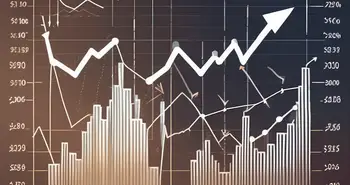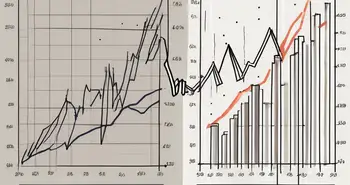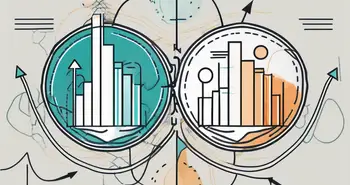What Are CFDs in Trading? A Comprehensive Guide
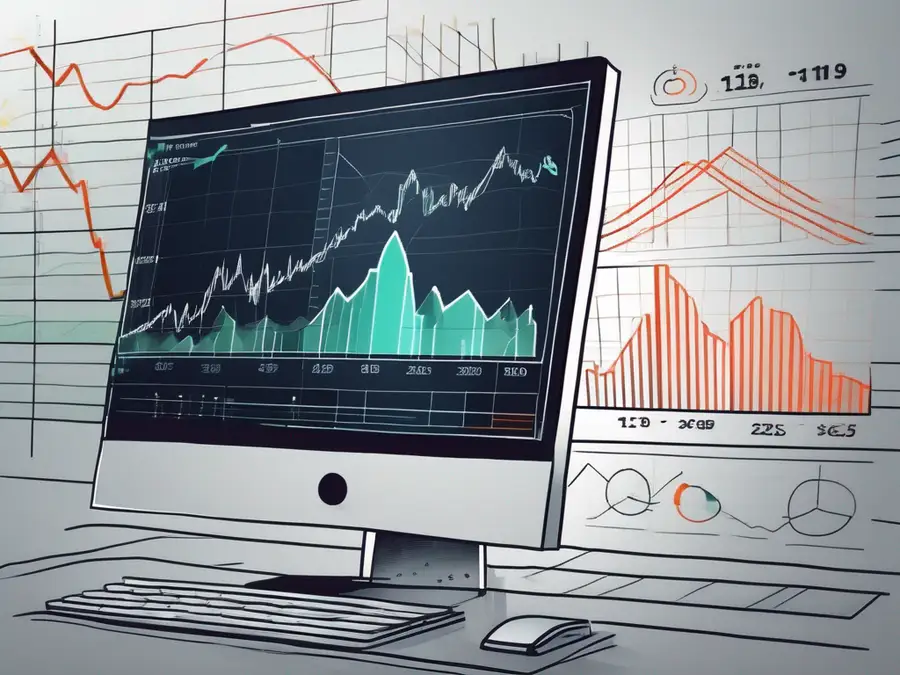
In today's fast-paced financial markets, there are numerous investment options available to traders. One such option that has garnered significant attention is CFD trading. But what are CFDs, and how do they work? In this comprehensive guide, I will take you through the ins and outs of CFD trading, providing you with a solid understanding of this popular financial instrument.
Understanding the Basics of CFDs
Before delving into the mechanics of CFD trading, let's start with a definition and overview of CFDs. CFD stands for Contract for Difference, which is a derivative instrument that allows traders to speculate on the price movements of various underlying assets, such as stocks, commodities, currencies, and indices. Unlike traditional investing, CFDs do not require traders to own the actual assets they are trading.
Now, you might wonder how CFDs came into existence. The history and evolution of CFDs can be traced back to the late 1980s when they were first introduced in the United Kingdom. Initially, CFDs were primarily used by institutional investors, but over time, they became accessible to retail traders as well. Today, CFD trading has gained immense popularity worldwide, thanks to its flexibility and potential for significant profits.
CFD Trading Explained in 3 Key Elements
-
Margin Trading:
Margin trading is a cornerstone of CFD trading, allowing traders to control positions that exceed their initial capital. For instance, consider a trader interested in purchasing CFDs for a stock valued at $10,000. With a margin requirement of 10%, the trader would only need to deposit $1,000 to open the position, leveraging the remaining $9,000 from the broker. This leverage amplifies the trader's market exposure, potentially leading to higher returns. However, it's important to recognize that while margin trading offers the potential for increased profits, it also exposes traders to higher risks, as losses can exceed the initial investment. -
Long and Short Positions:
CFD trading offers the unique ability to take both long and short positions on various assets. Suppose a trader believes that the price of gold will increase over time. They can enter a long position by purchasing gold CFDs. Conversely, if another trader anticipates a decline in the price of oil, they can take a short position by selling oil CFDs.
This flexibility enables traders to profit from both upward and downward market movements, unlike traditional investing where profits are solely dependent on asset price appreciation. -
Diverse Asset Selection:
CFD trading provides access to a wide range of underlying assets, including stocks, commodities, currencies, and indices. For example, traders can speculate on the performance of tech giants like Apple or Amazon, commodities like crude oil or gold, major currency pairs such as EUR/USD, or global indices like the NASDAQ or FTSE 100.
This diverse asset selection empowers traders to diversify their portfolios and capitalize on various market opportunities. For instance, a trader may choose to diversify by investing in both stocks and commodities to spread risk across different sectors and asset classes.
If you want to expand your portfolio without limits, Morpher is the right platform for you. US stocks, the most popular cryptocurrencies, commodities, indices and unique markets that bring a whole new twist to trading, you can diversify your portfolio as you wish, while maximizing your gains with up to 10x leverage! Sign up to Morpher now and enjoy your welcome bonus!
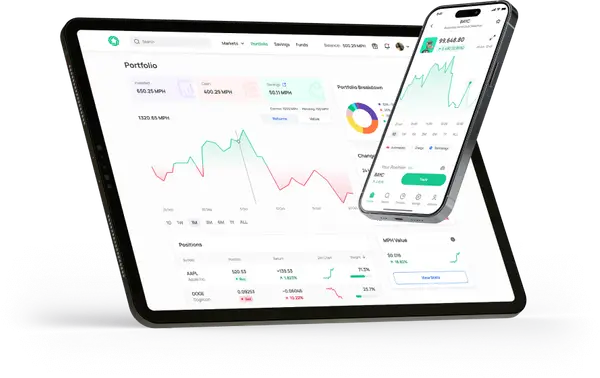
The Mechanics of CFD Trading
Now that you have a general understanding of what CFDs are, let's dive into how they work. CFDs operate on the principle of margin trading, allowing traders to open leveraged positions using borrowed funds. This means that you can take a larger position than your initial investment, potentially amplifying your profits if the trade goes in your favor. However, it's essential to remember that leverage can also magnify losses.
Key features of CFD trading include the ability to go long or short on an asset, which means you can profit from both rising and falling markets. Additionally, CFDs offer the advantage of trading on margin, providing traders with greater market exposure with a relatively smaller investment. Furthermore, CFDs allow for trading a diverse range of assets without the need for owning and physically storing them.
Advantages and Disadvantages of CFD Trading
As with any investment instrument, CFD trading has its own set of advantages and disadvantages. Let's explore the potential benefits first.
Potential Benefits of CFD Trading
One of the significant benefits of CFD trading is the ability to profit from both rising and falling markets. Unlike traditional investing, where you can only make money when an asset's price goes up, CFDs allow you to take advantage of price movements in either direction. This flexibility can be particularly useful during volatile market conditions.
Another advantage of CFD trading is the leverage it offers. By leveraging your position, you can control a larger portion of an asset's value with a smaller investment. This increased exposure can potentially result in higher profits if your trade goes well. However, it's crucial to use leverage responsibly and understand the associated risks.
Moreover, CFD trading provides access to a wide range of financial markets, including stocks, commodities, currencies, and indices, all from a single trading account. This convenience enables traders to diversify their portfolios and take advantage of various opportunities across different asset classes.
- Leverage: CFDs offer the advantage of leverage, allowing traders to initiate positions with only a fraction of the total position value.
- Flexibility: CFDs offer the flexibility to trade regardless of market direction, allowing traders to take both long and short positions.
- Tax advantages: In some jurisdictions, the use of leveraged derivatives such as CFDs can provide tax advantages.
- Extended trading hours: CFD markets offer extended trading hours, allowing traders to participate outside normal market hours. It is important to note that prices during these hours may differ from those during regular trading hours.
- Hedging opportunities: CFD trading offers the chance to hedge against losses by offsetting them with profits from other positions.
On the flip side, CFD trading also comes with its own set of risks and challenges.
Risks and Challenges in CFD Trading
One of the primary risks in CFD trading is the potential for losses. Due to the leverage involved, even a small adverse move in the market can result in significant losses. It's essential to carefully manage risk, set appropriate stop-loss orders, and never invest more than you can afford to lose.
Additionally, CFD trading carries counterparty risks. Since CFDs are traded over-the-counter (OTC), you are exposed to the credit risk of the broker or provider you are trading with. It's crucial to choose a reputable and regulated broker to mitigate this risk.
Furthermore, CFD trading requires a deep understanding of the markets, chart analysis, and risk management strategies. Without proper knowledge and discipline, it's easy for novice traders to make costly mistakes and incur losses. Therefore, it's essential to educate yourself, practice with demo accounts, and continuously learn and refine your trading strategies.
Strategies for Successful CFD Trading
To succeed in CFD trading, it's crucial to develop a solid trading strategy and stick to it. Let's discuss two fundamental approaches: fundamental analysis and technical analysis.
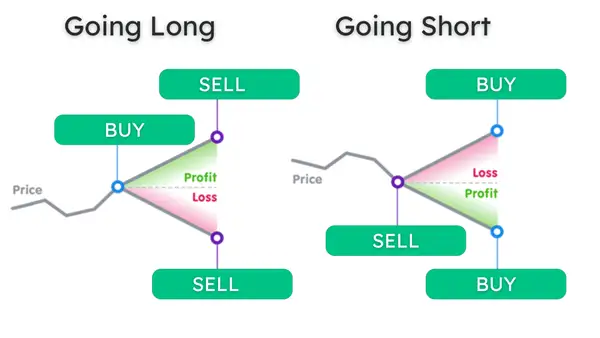
Fundamental Analysis in CFD Trading
Fundamental analysis involves evaluating the underlying factors that can impact an asset's value, such as economic indicators, company financials, geopolitical events, and industry trends. By analyzing these fundamental factors, traders can make more informed decisions and potentially identify undervalued or overvalued assets.
For example, if you are trading CFDs on stocks, you might analyze a company's financial statements, earnings reports, and industry news to assess its growth prospects and overall health. By combining fundamental analysis with proper risk management, you can increase your chances of making profitable trades.
Technical Analysis in CFD Trading
Technical analysis, on the other hand, involves studying historical price and volume data to identify patterns and trends. Traders who use technical analysis often rely on chart indicators, chart patterns, and price action to make trading decisions.
For instance, if you are trading CFDs on currencies, you might analyze candlestick patterns, support and resistance levels, and moving averages to identify potential entry and exit points. Technical analysis can be a powerful tool to predict short-term price movements and execute trades with precision.
Regulatory Aspects of CFD Trading
Before diving into CFD trading, it's crucial to understand the regulatory framework surrounding this financial instrument.
Understanding CFD Trading Regulations
CFD trading is subject to regulations in different jurisdictions, and these regulations can vary significantly. It's vital to choose a broker that is regulated by a reputable financial authority. Regulation helps protect traders' interests, ensures fair market practices, and promotes transparency within the industry.
Compliance and Legal Considerations in CFD Trading
As a CFD trader, it's crucial to comply with legal and tax requirements specific to your country of residence. Make sure to familiarize yourself with the regulations regarding CFD trading, including tax obligations and reporting requirements, to avoid any legal complications or penalties.
Now that we have covered the main aspects of CFD trading, let's revisit some of the frequently asked questions to reinforce the key takeaways.
Frequently Asked Questions
What are CFDs?
CFDs, or Contracts for Difference, are derivative instruments that allow traders to speculate on the price movements of various underlying assets without owning the assets themselves.
How do CFDs work?
CFDs operate on the principle of margin trading, allowing traders to open leveraged positions using borrowed funds. Traders can profit from both rising and falling markets by going long or short on an asset.
What are the advantages of CFD trading?
CFD trading offers the potential for trading a wide range of assets, the flexibility to profit in both rising and falling markets, and the ability to trade on margin, providing greater market exposure with a smaller investment.
What are the risks of CFD trading?
Risks in CFD trading include the potential for losses due to leverage, counterparty risks associated with trading over-the-counter, and the need for deep market knowledge, chart analysis skills, and risk management strategies.
How can I succeed in CFD trading?
To succeed in CFD trading, it's crucial to develop a solid trading strategy, whether based on fundamental analysis or technical analysis. Continuous learning, risk management, and choosing a reputable regulated broker are also essential.
Why is regulatory compliance important in CFD trading?
Regulation ensures fair market practices, protects traders' interests, and promotes transparency within the industry. Compliance with legal and tax obligations specific to your jurisdiction helps avoid legal complications and penalties.
By understanding the basics, risks, and strategies of CFD trading, you are well-equipped to embark on your trading journey. Remember to diversify your portfolio, exercise caution, and always stay informed about market developments. Happy trading!
Ready to take your trading to the next level with the innovative features of Morpher? Embrace the future of investing on a platform that offers zero fees, infinite liquidity, and the ability to trade a vast array of assets, from stocks and forex to unique markets like NFTs. With Morpher, you can start with fractional investing, enjoy the benefits of short selling without interest fees, and experience the safety of a non-custodial wallet. Plus, with up to 10x leverage, you can amplify your trading strategies. Don't miss out on the unique trading experience that Morpher.com provides, built on the Ethereum Blockchain for a truly distinct approach. Sign Up and Get Your Free Sign Up Bonus today, and join the community of traders who are already shaping the future of the markets.

Disclaimer: All investments involve risk, and the past performance of a security, industry, sector, market, financial product, trading strategy, or individual’s trading does not guarantee future results or returns. Investors are fully responsible for any investment decisions they make. Such decisions should be based solely on an evaluation of their financial circumstances, investment objectives, risk tolerance, and liquidity needs. This post does not constitute investment advice.

Painless trading for everyone
Hundreds of markets all in one place - Apple, Bitcoin, Gold, Watches, NFTs, Sneakers and so much more.

Painless trading for everyone
Hundreds of markets all in one place - Apple, Bitcoin, Gold, Watches, NFTs, Sneakers and so much more.

